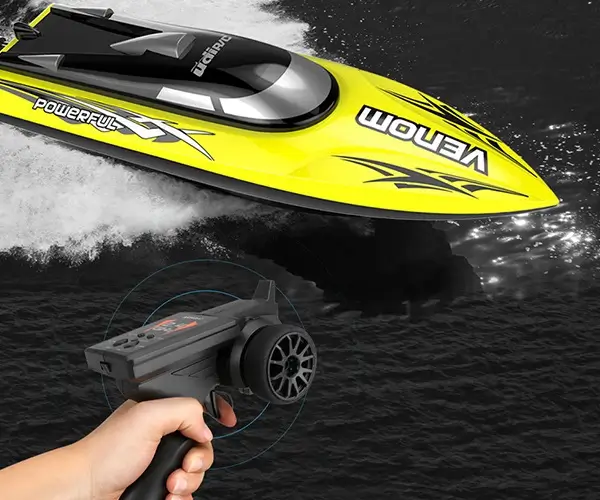The Fascinating Journey: Turning Any DC Motor Into a Servo Motor
In the vast world of robotics, automation, and DIY projects, motors are the heartbeat of movement—they breathe life into your creations. Among these, DC motors are celebrated for their simplicity, affordability, and widespread availability. But while DC motors are great for straightforward applications—like powering wheels or lifting mechanisms—they lack the refined control that a servo motor offers.

So, what if you could breathe new life into a standard DC motor, transforming it into a precise, controllable servo? Sounds intriguing, right? Not only does this open doors to cost-effective solutions, but it also ignites the creative spirit of hobbyists, students, and engineers alike.
Understanding the Basics: What is a Servo Motor?
Before diving into the conversion process, let's clarify what sets a servo apart from a typical DC motor. A servo motor is a specialized, closed-loop motor system equipped with an internal feedback mechanism—usually a potentiometer or encoder—that constantly updates the position, allowing the motor to rotate to a specific angle and hold that position with precision. Think of it as a dedicated controller that "knows" exactly where the arm or mechanism is and can make adjustments instantly.
In contrast, a typical DC motor relies on voltage and current control to gear its speed and direction but doesn’t inherently know or maintain its position. To achieve similar precision with a standard DC motor, you need to add elements that mimic or complement this internal feedback.
Why Convert DC Motors into Servos?
Converting a regular DC motor into a servo unlocks a range of advanced functionalities:
Enhanced Control: Precise angular positioning, smooth movement, and accurate feedback make your projects more refined. Cost Efficiency: Rather than purchasing dedicated servo motors, you can modify existing DC motors, saving money. Customization: Tailor the control mechanisms, feedback systems, and power supply to fit specific needs. Educational Value: Understanding the inner workings of motor control adds to your engineering knowledge.
The Core Concept: Feedback and Control
The key to turning a standard DC motor into a servo is implementing a control loop that continuously monitors the motor’s position and corrects it as needed. This feedback control system generally involves a sensor (like a potentiometer or encoder) attached to the motor shaft and a controller—often a microcontroller or a dedicated motor driver.
Here's the gist:
Sense Position: The feedback device measures how far the motor has turned from its desired position. Compare: The system compares the actual position to the target position. Correct: Based on the difference, the controller adjusts the voltage or current going to the motor, rotating it toward the target.
It sounds straightforward, but the devil is in the details. A key component in this conversion process is designing or selecting an appropriate feedback sensor and integrating it into your control system.
Tools and Materials You’ll Need
To get started, here’s a typical list of what you might require:
Standard DC Motor: The existing motor you plan to convert. Feedback Sensor: Popular options include potentiometers or optical encoders. Potentiometers are simpler and cheaper but less precise; encoders offer higher accuracy. Microcontroller: Devices like Arduino, Raspberry Pi, or ESP32, capable of processing feedback signals and controlling motor drivers. Motor Driver: An H-bridge or dedicated motor driver module to handle the current and voltage needed. Power Supply: Adequate power source matching your motor specifications. Control Software: Programming environment to write the control algorithms—PID controllers are common for this purpose. Additional Components: Connecting wires, mounting brackets, and possibly a gear system or coupling for better torque and control.
The Step-by-Step Conversion Process
While the details can vary depending on the specific motors and sensors used, a typical process might look like this:
Mount the Feedback Sensor: Attach the potentiometer or encoder to the motor shaft securely. When the motor turns, the sensor should produce a proportional voltage or pulse reflecting the position.
Connect the Electronics: Wire the sensor to the microcontroller's input pins, and connect the motor driver to the motor and the motor power supply.
Develop the Control Algorithm: Write or use existing algorithms—like a PID controller—to interpret feedback signals and generate the control commands.
Calibrate the System: Determine the range of the feedback sensor, set the PID parameters, and test the response to commands.
Program the Microcontroller: Implement the control loop that reads the feedback, compares it to the target, computes the correction, and adjusts the motor voltage accordingly.
Test and Refine: Fine-tune the parameters, test various movements, and troubleshoot any issues such as oscillation, lag, or drift.
Leveraging innovations in modular drive technology, Kpower integrates high-performance motors, precision reducers, and multi-protocol control systems to provide efficient and customized smart drive system solutions.




































